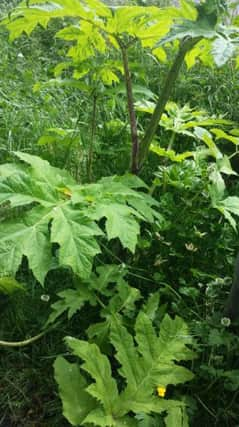Fears ‘virulent’ plant was spotted in Glengormley


Deborah Mulholland was walking along Church Way when she discovered the large plant, which she believed to be giant hogweed, standing at over a metre tall, at the side of the path.
The Royal Horticultural Society (RHS), describes giant hogweed as “invasive and potentially harmful”.
Advertisement
Hide AdAdvertisement
Hide AdIt continues: “Chemicals in the sap can cause photodermatitis or photosensitivity, where the skin becomes very sensitive to sunlight and may suffer blistering, pigmentation and long-lasting scars.”
After Ms Mulholland raised the issue with Transport NI, the plant was trimmed. However, Ms Mulholland says that its root is still in place, meaning that it could regrow.
“The budget cuts stopped Road Service cutting verges and grassy areas and as a result what I believe is a dangerous and virulent plant has appeared.” she stated.
“Its leaves were obstructing the path. A lot of school children and dog walkers use that path. It’s only a matter of time before a child or adult receives serious burns.”
Advertisement
Hide AdAdvertisement
Hide AdIn March, the DRD announced that it would be providing grass-cutting services on a “reduced scale”.
A DRD spokesperson commented: “The Department has already cut back all the vegetation in the area, however, future growth will be monitored throughout the year for evidence of ‘giant hogweed’. The grass at this location was cut twice last year.”
The spokesperson said it was an offence to “cause to grow” plants such as giant hogweed in the wild. Where a plant is confirmed to be giant hogweed, the spokesperson stated that the best method of removal is to cut below ground level with a spade and cut through the root structure to prevent regrowth.
She added that this must be carried out before seeds become viable as interference with the plant at that stage would cause seeds to scatter, causing it to grow in the wild in breach of wildlife legislation.